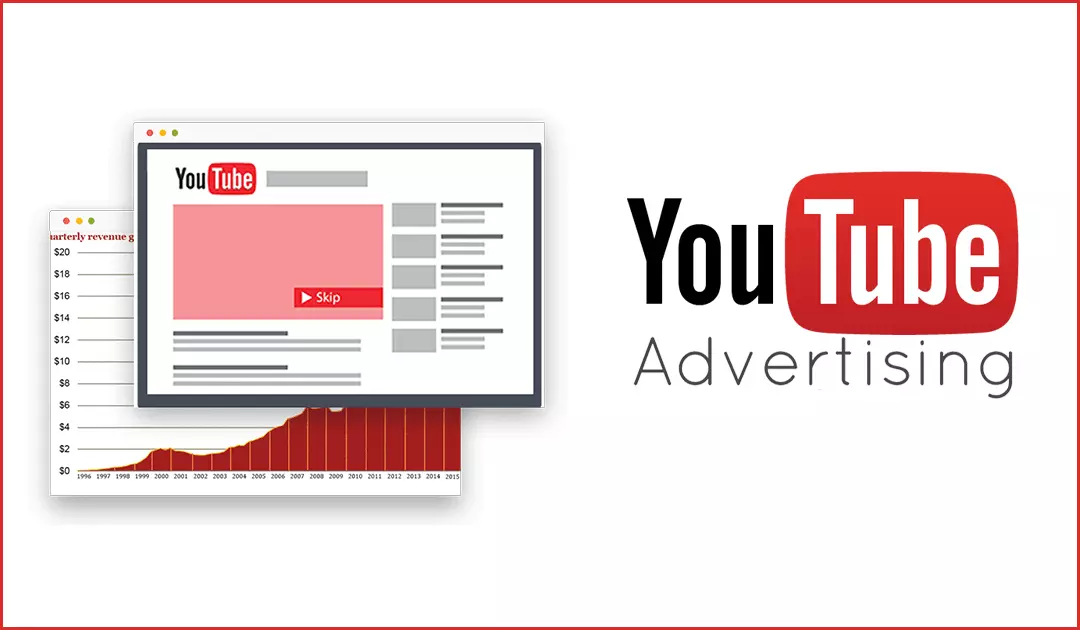YouTube is the world's largest video-sharing platform, with over 2 billion monthly active users. The platform's popularity has made it a highly effective advertising tool for businesses of all sizes. YouTube advertising is a way to promote your brand, products, or services to your target audience through video ads.
Types of YouTube Ads:
Skippable in-stream ads: These ads are shown before, during, or after a video and allow viewers to skip the ad after five seconds. Advertisers only pay if the viewer watches the ad for 30 seconds or clicks on it.
Non-skippable in-stream ads: These ads cannot be skipped and are shown before, during, or after a video. They are limited to 15 seconds and are ideal for short and straightforward messages.
Bumper ads: These are short, non-skippable ads that are limited to six seconds. They are ideal for creating brand awareness and driving brand recall.
Video discovery ads: These ads appear in YouTube search results, on the YouTube homepage, and as related videos on the watch page.
Display ads: These ads appear next to videos or in the sidebar of the YouTube homepage. They are ideal for driving traffic to your website.
Benefits of YouTube Advertising:
Reach a massive audience: With over 2 billion monthly active users, YouTube is the world's largest video-sharing platform, making it an ideal platform to reach a massive audience.
Cost-effective: YouTube advertising is cost-effective, with advertisers only paying if viewers watch the ad for 30 seconds or click on it.
Targeted advertising: YouTube allows advertisers to target specific audiences based on demographics, interests, and behavior, making it easier to reach your target audience.
Increased engagement: Video ads on YouTube tend to be more engaging and have higher click-through rates than traditional ads.
Measurable results: YouTube provides advertisers with detailed metrics on their ad campaigns, allowing them to track their results and make data-driven decisions.
Tips for Successful YouTube Advertising:
Define your target audience: Before creating your ad campaign, define your target audience based on demographics, interests, and behavior.
Create engaging video content: Create video content that is engaging and relevant to your target audience.
Use eye-catching visuals: Use eye-catching visuals and design elements to make your ad stand out.
Keep it short and sweet: Keep your ads short and to the point, with a clear call-to-action.
Optimize for mobile: Optimize your ads for mobile devices, as the majority of YouTube viewers watch videos on their mobile devices.
Experiment with different ad formats: YouTube offers a variety of ad formats, so it's worth experimenting with different types of ads to see what works best for your business. Try using different formats for different goals, such as creating brand awareness or driving conversions.
Use targeting options wisely: YouTube offers a range of targeting options, including demographics, interests, and behavior. Use these targeting options wisely to ensure that your ads are reaching the right audience.
Focus on the first five seconds: The first five seconds of your ad are crucial, as viewers can skip your ad after this time. Make sure your ad captures viewers' attention and delivers your message quickly.
Test and optimize your campaigns: Continuously test and optimize your campaigns to improve your results. Use YouTube's analytics to track your performance and make data-driven decisions.
Consider collaborating with influencers: YouTube influencers have massive audiences and can help you reach your target audience more effectively. Consider partnering with influencers to create sponsored content that promotes your brand.
Use clear and concise messaging: Use clear and concise messaging in your ads to ensure that viewers understand your message. Avoid using jargon or complex language that could confuse viewers.
Invest in high-quality video production: Invest in high-quality video production to ensure that your ads look professional and engaging. Poor quality videos can detract from your message and harm your brand image.
Utilize retargeting: Retargeting is a powerful strategy that allows you to show ads to people who have already interacted with your brand or website. YouTube allows you to create retargeting audiences based on people who have watched your videos or engaged with your ads.
Test different ad placements: YouTube offers various ad placements, including pre-roll, mid-roll, and post-roll ads. Test different placements to see which ones work best for your business and goals.
Use call-to-actions: Use call-to-actions in your ads to encourage viewers to take action, such as visiting your website or subscribing to your channel. Make sure your call-to-action is clear and easy to follow.
Monitor your budget: Set a budget for your YouTube ads and monitor it closely to ensure that you're not overspending. Use YouTube's bidding strategies to optimize your budget and get the best results.
Create a strong brand identity: YouTube advertising is an excellent opportunity to showcase your brand identity and personality. Make sure your ads align with your brand's values, voice, and tone.
Analyze your competition: Analyze your competition's YouTube ads to get inspiration and ideas for your own ads. See what works for them and how you can differentiate yourself from the competition.
Keep up with trends: Stay up-to-date with the latest YouTube advertising trends and best practices. YouTube is continually evolving, so it's important to keep learning and adapting your strategies accordingly.
Measure your ROI: Measure your return on investment (ROI) for your YouTube ad campaigns to ensure that you're getting a positive return. Use YouTube's analytics to track your results and make data-driven decisions.
By implementing these strategies, businesses can create effective YouTube ad campaigns that help them reach their target audience, drive brand awareness, and increase engagement. YouTube advertising is a powerful tool for businesses of all sizes, so it's worth investing time and resources into creating high-quality ads that resonate with your audience.

Comments
Post a Comment